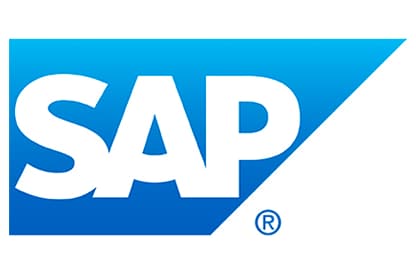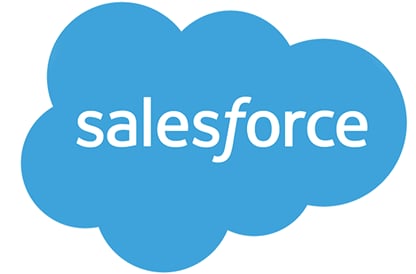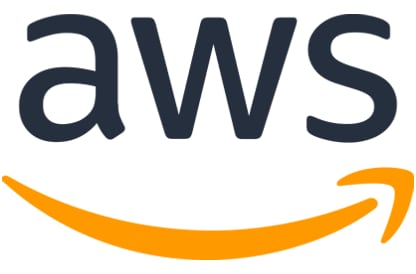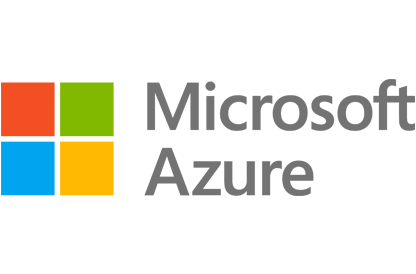Why OpenText
Why OpenText
Overview Why OpenText
OpenText brings decades of expertise to help you unlock data, connect people and processes, and fuel AI with trust
Manage and connect data
Unify data seamlessly across your enterprise to eliminate silos, improve collaboration, and reduce risks
AI-ready information
Get AI-ready and transform your data into structured, accessible, optimized information
Built-in security and compliance
Meet regulatory and compliance requirements and protect your information throughout its lifecycle
Empowering people
Overview Empowering people
OpenText helps people manage content, automate work, use AI, and collaborate to boost productivity
Customers
See how thousands of companies around the world are succeeding with innovative solutions from OpenText
Employees
Our people are our greatest asset; they are the life of the OpenText brand and values
Corporate Responsibility
Learn how we aspire to advance societal goals and accelerate positive change
Partners
Find a highly skilled OpenText partner with the right solution to enable digital transformation
How we compare
Content Management
Service Management
Deploy anywhere
Overview Deployment options
Explore scalable and flexible deployment options for global organizations of any size
Sovereign cloud
Local control. Global scale. Trusted AI
Private cloud
Your cloud, your control
On-premises
Free up resources, optimize performance and rapidly address issues
Public cloud
Run anywhere and scale globally in the public cloud of your choice
AI leadership
Overview Aviator AI
See information in new ways
OpenText™ Aviator AI
AI that understands your business, your data, and your goals
OpenText™ MyAviator
Say hello to faster decisions. Your secure personal AI assistant is ready to get to work
OpenText™ Business Network Aviator
Gain better insights with generative AI for supply chains
OpenText™ Content Aviator
Power work with AI content management and an intelligent AI content assistant
OpenText™ Cybersecurity Aviator
Improve your security posture with AI cybersecurity and agile threat detection
OpenText™ DevOps Aviator
Enable faster app delivery, development, and automated software testing
OpenText™ Experience Aviator
Elevate customer communications and experiences for customer success
OpenText™ Service Management Aviator
Empower users, service agents, and IT staff to find the answers they need
Aviator AI
Overview Aviator AI
See information in new ways
OpenText™ Aviator AI
AI that understands your business, your data, and your goals
OpenText™ MyAviator
Say hello to faster decisions. Your secure personal AI assistant is ready to get to work
OpenText™ Business Network Aviator
Gain better insights with generative AI for supply chains
OpenText™ Content Aviator
Power work with AI content management and an intelligent AI content assistant
OpenText™ Cybersecurity Aviator
Improve your security posture with AI cybersecurity and agile threat detection
OpenText™ DevOps Aviator
Enable faster app delivery, development, and automated software testing
OpenText™ Experience Aviator
Elevate customer communications and experiences for customer success
OpenText™ Service Management Aviator
Empower users, service agents, and IT staff to find the answers they need
Analytics
Overview Analytics
Predict, act, and win with real-time analytics on a smarter data platform
OpenText™ Aviator Search(AI)
Give users access to the answers they need, faster and easier, with multi-repository AI-based search that lets you contextualize everything from clicks to conversations
Business Network
Overview Business Network
Connect once, reach anything with a secure B2B integration platform
Content
Overview Content
Reimagine knowledge with AI-ready content management solutions
OpenText™ Content Aviator(AI)
Supercharge intelligent workspaces with AI to modernize work
Cybersecurity
Overview Cybersecurity
Integrated cybersecurity solutions for enterprise protection
OpenText Cybersecurity for SMBs & MSPs
Purpose built data protection and security solutions
OpenText™ Cybersecurity Aviator(AI)
Reinvent threat hunting to improve security posture with the power of agile AI
DevOps
Overview DevOps
Ship better software—faster—with AI-driven DevOps automation, testing, and quality
Experience
Overview Experience
Reimagine conversations with unforgettable customer experiences
Observability and Service Management
Overview Observability and Service Management
Get the clarity needed to cut the cost and complexity of IT operations
OpenText™ Service Management Aviator(AI)
Redefine Tier 1 business support functions with self-service capabilities from private generative AI
APIs
Overview APIs
Build custom applications using proven OpenText Information Management technology
OpenText™ API Services
Build it your way with OpenText Cloud APIs that create the real-time information flows that enable custom applications and workflows
Device and Data Protection
Overview Device and Data Protection
Protect what matters, recover when it counts
Unified Endpoint Management Tools
- OpenText™ Endpoint Management
- OpenText™ ZENworks Suite
- OpenText™ ZENworks Service Desk
- OpenText™ ZENworks Configuration Management
- OpenText™ ZENworks Endpoint Security Management
- OpenText™ ZENworks Full Disk Encryption
- OpenText™ ZENworks Endpoint Software Patch Management
- OpenText™ ZENworks Asset Management
Solutions
Trusted Data & AI
Overview Trusted Data & AI
Secure information management meets trusted AI
OpenText AI Data Platform
A unified data framework to elevate data and AI trust
OpenText Aviator Studio
A place where you can build, deploy, and iterate on agents in your data's language
OpenText Discovery
A set of tools to help ingest data and automate metadata tagging to fuel AI
OpenText Data Compliance
A suite of services and APIs that make governance proactive and persistent
OpenText Aviator AI Services
Professional services experts who help you on your AI journey
Information Reimagined
Overview Information Reimagined
Get greater visibility and sharper insights from AI-driven information management. Ready to see how?
Knowledge reimagined
Transform daily work with enterprise content management powered by AI
Service Management reimagined
Cut the cost and complexity of IT service management, AIOps, and observability
Connections reimagined
AI-powered B2B integration for supply chain success
Conversations reimagined
Drive value, growth, and loyalty with connected customer experiences
Engineering reimagined
Agile development and software delivery? It only seems impossible
Security reimagined
Cybersecurity for the Enterprise
Decisions reimagined
Unlock insights with AI data analytics
Artificial Intelligence
Overview Aviator AI
See information in new ways
OpenText™ Aviator AI
AI that understands your business, your data, and your goals
OpenText™ MyAviator
Say hello to faster decisions. Your secure personal AI assistant is ready to get to work
OpenText™ Business Network Aviator
Gain better insights with generative AI for supply chains
OpenText™ Content Aviator
Power work with AI content management and an intelligent AI content assistant
OpenText™ Cybersecurity Aviator
Improve your security posture with AI cybersecurity and agile threat detection
OpenText™ DevOps Aviator
Enable faster app delivery, development, and automated software testing
OpenText™ Experience Aviator
Elevate customer communications and experiences for customer success
OpenText™ Service Management Aviator
Empower users, service agents, and IT staff to find the answers they need
Industry
Overview Industry solutions
Improve efficiency, security, and customer satisfaction with OpenText
Energy and resources
Transform energy and resources operations with cloud, cybersecurity, and AI
Financial services
Boost customer experience, compliance, and efficiency with AI
Government
Reimagine your mission with government-secure information management
Healthcare and life sciences
Improve care delivery and patient engagement with AI-powered solutions
Legal
Modernize legal teams with automated, AI-powered legal tech solutions
Manufacturing
Modernize manufacturing operations and logistics to reduce costs and ensure compliance
Retail and consumer goods
Enhance consumer engagement with omnichannel retail solutions and AI
Enterprise Application
Overview Solutions for Enterprise Applications
Run processes faster and with less risk
Services
Services
Overview Services
Achieve digital transformation with guidance from certified experts
Professional Services
Modernize your information management with certified experts
Customer Success Services
Meet business goals with expert guidance, managed services, and more
Support Services
Turn support into your strategic advantage
Managed Services
Free up your internal teams with expert IT service management
Learning Services
Discover training options to help users of all skill levels effectively adopt and use OpenText products
Professional Services
Overview Professional Services
Modernize your information management with certified experts
Customer Success Services
Overview Customer Success Services
Meet business goals with expert guidance, managed services, and more
Support Services
Overview Support Services
Turn support into your strategic advantage
Managed Services
Overview Managed Services
Free up your internal teams with expert IT service management
Learning Services
Overview Learning Services
Discover training options to help users of all skill levels effectively adopt and use OpenText products
Partners
Find a Partner
Overview Find a partner
Information is the heartbeat of every organization. We build information management software so you can build the future
Cloud Partners
Overview Cloud Partners
OpenText partners with leading cloud infrastructure providers to offer the flexibility to run OpenText solutions anywhere
Enterprise Application Partners
Overview Enterprise Application Partners
OpenText partners with top enterprise app providers to unlock unstructured content for better business insights
Partner Solutions
Overview Partner Solutions
Discover flexible and innovative offerings designed to add value to OpenText solutions
Resources for Partners
Overview Resources for Partners
Discover the resources available to support and grow Partner capabilities
Support
Overview Customer Support
Get expert product and service support to accelerate issue resolution and keep business flows running efficiently
Resources
Overview Resources
Explore detailed services and consulting presentations, briefs, documentation and other resources
Choose your region:
Europe, Middle East and Africa
Asia–Pacific
What is FinOps?

Overview
FinOps (a combination of the words “Finance” and “DevOps”) is a management practice that organizations use to optimize the financial performance of their cloud computing infrastructure. It promotes shared responsibility for cloud costs across information technology (IT), DevOps, and other cross-functional teams in order to improve decision making processes and drive greater business value.
Cloud computing is a top operating expense (OpEx) for an increasing number of organizations—which means it’s essential for them to implement FinOps. With FinOps, organizations can gain a thorough understanding of their cloud computing costs to optimize those costs, boost profits, and gain a competitive edge.
A big problem today is that approximately one-third of all cloud spend is going to waste. Cloud vendors are more than happy to tell you all the ways you can cut cloud costs. But until you fully understand the variable spend model of public clouds, and implement solutions accordingly, savings will be slow to come. Fortunately, there is a way to cut cloud waste and control cloud spending. Enter FinOps.
The goal of FinOps is to ensure that an organization's cloud spending aligns with its business objectives and that cross-functional teams work harmoniously to gain more financial control and predictability, reduce friction, and deliver products faster.
In this guide, we'll explain all the basics you need to know about FinOps, its core principles, and the key areas of the practice.
Get more cloud for your money with FinOps
FinOps
What is the philosophy of FinOps?
To better understand Cloud FinOps and cloud financial management, let's first dissect the FinOps philosophy.
FinOps is a way of managing your company's OpEx. It focuses on:
- Efficiency: Wasting money is bad for business. To be efficient, businesses need to use their resources wisely and get the most value out of every dollar they spend.
- Optimization: There's always room for improvement. To optimize their finances, businesses must constantly strive to do more with less.
- Continuous improvement: The best way to improve is to learn from your mistakes and successes, then use that knowledge to continuously improve your financial processes.
It's important to note that FinOps is not just a set of isolated processes or tools. It is more than that. FinOps also represents a set of best practices, a culture, and mindset that should be adopted in an organization across teams, including the C-suite, and individual contributors.
Another defining feature of FinOps is that it is driven by a centralized cross-functional team [e.g., Cloud Center of Excellence] that directs and governs the adoption of FinOps, its outcomes, and strategic changes that may be needed to maximize the value derived from the cloud.
With FinOps, organizations can better manage their cloud spend to improve profitability and make better informed decisions regarding trade-offs between cost, speed, and quality.
What are the 3 tenets of Cloud FinOps?
Cloud FinOps practitioners focus on three key areas: cost optimization, forecasting, and accounting. In each of these areas, they use automation and cloud cost management solutions to improve efficiency and control costs.
Throughout the lifecycle journey, there are three phases of FinOps—Inform, Optimize, and Operate—that describe the processes of FinOps in a structured way. Let’s take a closer look.
1. Inform
The Inform phase is the first in the FinOps journey. It enables organizations to gain cloud spend visibility, accurately budget and allocate costs, and get forecasting insights. This phase promotes a better understanding of cloud costs, analyses, and benchmarking of performance both internally and against peers.
Each cloud provider (e.g., Microsoft Azure, AWS, Google Cloud) offers their own cloud consumption data, insights, and billing. However, for a clearer and united view across clouds, with additional trusted insights for forecasting and more, a FinOps–cloud financial management dedicated solution may be required. Visibility is the very foundation of FinOps, and such a solution tells you exactly who is spending what, where, and why across all your clouds. You no longer fly blind in the complexity of multiple clouds.
Developers and engineers are the biggest users of cloud resources, so it’s especially important that they have timely visibility into their costs, along with budget alerts. The goal is to prevent reckless spending and promote a culture of financial responsibility. Cloud FinOps practitioners use cost monitoring and reporting tools to give developers the information they need to optimize costs.
2. Optimize
The optimize phase includes multiple optimization levers. Organizations can, for example, leverage rightsizing insights, automate on and off times for workloads that don’t need to run continuously, and improve reservation planning (taking advantage of the discounts that cloud providers offer in exchange for longer-term commitments).
Cost optimization is a key focus of Cloud FinOps. Practitioners use automation and cloud cost management solutions to help implement the actions required for realizing optimization opportunities and reduce wasteful spending. Practitioners aim to reduce costs while managing sufficient use of the cloud for all project shareholders.
3. Operate
Organizations continuously evaluate business metrics, measure business alignment, define policies, and build processes and workflows to further optimize the value of cloud.
Through logistics and a cloud management platform, practitioners aim to keep the cloud running smoothly and efficiently.
By focusing on these three areas, practitioners can help organizations save money on their cloud bills and get the most out of their cloud investment.
The 6 principles of FinOps
We can break down Cloud FinOps into six core principles, including:
- Team Collaboration
- Ownership
- Central Control
- Accessible Reports
- Business-Driven Decisions
- Variable Cost Model
1. Team collaboration
One of the essential principles of Cloud FinOps is team collaboration. To effectively optimize an organization's financial performance in the cloud, it's essential to have a strong team that can work together towards a common goal. Therefore, adopters place a strong emphasis on communication, collaboration, and breaking down silos. By working together, teams can more effectively identify opportunities for cost savings and develop more efficient processes in the cloud.
2. Ownership
Another vital principle of Cloud FinOps is ownership. The entire goal of Cloud FinOps is for everyone to take responsibility for their actions.
To that end, Cloud FinOps practitioners encourage all members of an organization to take ownership of their own cloud use against their budget. By taking responsibility for their own cloud utilization, they can more effectively identify and eliminate waste.
3. Central control
While FinOps practitioners encourage all members of an organization to take ownership of their own cloud utilization, they also recognize the importance of central control. To leverage FinOps is to oversee all aspects of the cloud. FinOps is driven by a centralized cross-functional team [e.g., Cloud Center of Excellence] that is made up of various roles that can include: finance, IT, engineering, business, procurement, and more. The team directs and governs the adoption of FinOps, its outcomes, and strategic changes that may be put in place to improve cloud cost-effectiveness and performance in their organization.
4. Accessible reports
Another vital principle of Cloud FinOps is accessible reports. To make informed decisions about an organization's cloud spending, it's essential to have access to accurate and up-to-date reports.
Developers and engineers are an especially important target. As cloud’s biggest consumers, they need timely visibility into their costs, along with budget alerts. The goal is to prevent reckless spending and promote a culture of financial responsibility.
5. Business-Driven decisions
FinOps is much more than providing visibility and controls around the usage of cloud and its costs. It also addresses best practices, disciplines, and a culture around why and how the spending occurs. Taking into account various aspects of economics determines the overall value returned to the business for a specific spend amount. We must not assume that the dollar saved will be a dollar value created. Rather, we must look at the overall return of the saved dollar. For example, $X in savings may also result in a decline in production speed, which could ultimately mean that the “dollar saved” was a dollar lost when looking at it from the overall perspective of a business.
This is why it is crucial to take into account multiple dimensions and consider trade-offs between speed, cost, and quality.
FinOps addresses this complex issue and facilitates an intelligent evaluation of what the best overall cloud business decisions are for a specific organization.
6. Variable cost model
The final principle of Cloud FinOps is to leverage the variable cost model of the public cloud. To that end, organizations using Cloud FinOps strive to minimize their unused capacity and match their utilization to their business needs.
What are the benefits of FinOps?
There are several benefits you can achieve by practicing Cloud FinOps, including:
- Reduced cloud computing costs
- Improved financial performance (profitability)
- Better decision-making based on data and collaboration
- Increased transparency
Reduced cloud computing costs
One of the most important benefits of Cloud FinOps is that it can help reduce your overall cloud computing costs. By identifying and eliminating waste and inefficiencies, you can save your organization a significant amount of money, which can in turn be used to fuel innovation or other key initiatives.
Improved financial performance
Related to the previous point, another benefit of FinOps is improving your organization's financial performance. This can lead to increased satisfaction among stakeholders and can lead to more investment opportunities.
Better decision-making
FinOps can also help improve your decision-making processes. By understanding how you’re allocating your money, you can make better informed decisions about allocating your resources.
Overall, the central control aspect of FinOps leads to increased accountability, which creates better outcomes.
Increased transparency
FinOps can also increase transparency within your organization. By tracking and understanding your cloud spending, you can provide greater visibility into the inner workings of your business. This increased transparency can help facilitate fruitful discussions across various teams and lead to harmonious or profitable ideas and outcomes that would not have occurred in a more siloed organization.
Learn about HCMX FinOps from OpenText
The FinOps philosophy helps organizations cut costs and make efficient business decisions. Putting Cloud FinOps into practice requires a platform that can provide you with a full-picture view into how your company utilizes the cloud.
OpenText™ HCMX FinOps Express makes it possible to cut cloud waste and control what you spend.
Through holistic and granular visibility into your cloud usage, you can:
- View all useful cloud usage metrics and data from one platform
- Analyze cost savings opportunities
- Reduce reckless acts of overprovisioning with controls in place
- Leverage cross-team decision making and collaboration
If you want to see how HCMX FinOps Express can make the difference in optimizing your company’s cloud costs, request a product inquiry today.
Get more cloud for your money with FinOps
One-third of cloud spend is going to waste. Cloud vendors are more than happy to tell you all the ways you can cut cloud costs. But until you fully understand the variable spend model of public clouds, savings will be slow to come. Fortunately, there is a way to cut cloud waste and control cloud spend.
Related products
OpenText™ IT Operations Cloud
Create competitive advantage with smarter IT Operations
OpenText™ FinOps and Cloud Management
Optimize costs and gain management consistency across all clouds
OpenText™ Hybrid Cloud Management (HCMX)
Cut costs. Improve control. Speed delivery
OpenText™ HCMX FinOps Express
Optimize your cloud costs—cut waste and control spend





